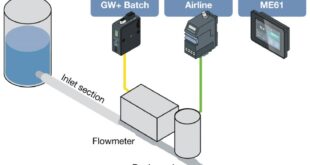Being able to monitor plant alarms and events in real time, in chronological order, is critical when a plant experiences an avalanche of alarms caused by an abnormal event. Here Gary Bradshaw discusses how sequence of events (SOE) monitoring can be used to cut unplanned plant downtime and reduce operational costs
Alarm logging and high-resolution sequence of events (SOE) monitoring is a crucial tool for effective event analysis in most key industrial sectors. For example, in electrical generation and distribution applications, equipment like switchgears have a fixed lifespan based on the number of circuit trips, making trip identification crucial in assessing your equipment’s remaining service life and planning maintenance accordingly.
When it comes to SOE monitoring, the faster a system can timestamp alerts and discriminate between them, the more accurate the subsequent event report is. An accurate SOE report allows more effective fault detection and lowers plant maintenance costs.
Natref SOE monitoring
The Natref petrol refinery in South Africa, jointly owned between Sasol and TotalEnergies, is designed to get the most out of crude oil. By optimising its use of the bottoms upgrading refining process, Natref can produce 70% more white product than coastal refineries, which rely on heavy fuel oil.
Across Natref’s 17 substations, automatically operated circuit breakers are used to protect electrical circuits from damage in the event of a short circuit or system overload. They do this by interrupting current flow if a fault is detected. Unlike fuses, which are one-use only, circuit breakers reset to resume normal operation. However, they have a finite operating life and can only be reset a fixed number of times before being replaced.
Monitoring the operation of circuit breakers at the substations was a long-standing problem for Natref’s engineers since they had no way of knowing if one had tripped and automatically reset. On-site alarms only showed the current state of the circuit breakers so, if they had been reset, they would present as normal. This meant that engineers were unaware of underlying issues at the substations because all circuit breakers were showing as normal when inspected, and incidents went undetected. Furthermore, they didn’t know the remaining service life of any on-site circuit breakers, meaning they couldn’t adequately prepare for upcoming maintenance needs.
To combat these problems, Omniflex provided Natref with Omni16C alarm annunciators that monitored circuit breaker operations and Maxiflex SOE modules that recorded events at the substations to better than 1 millisecond. The data is time-stamped and recorded on a built-in SD card to produce an electronic data repository for auditing purposes. The biggest benefit is narrowing down the root cause of the trip by recording events down to 1 millisecond resolution, improving fault finding performance.
From each monitored switch, the signal is split so it goes to the annunciator and the sequence of events recorder in parallel. The contact from the circuit breaker is monitored, open or closed, and the annunciator traps the momentary alarm caused by the circuit breaker tripping and maps it to the alarm status. This enables engineers to see all events, regardless of the circuit breaker status at the time of testing.
Each substation has a GPS time synchronisation module that updates and synchronises time across the entire system so time in one substation is the same in the next, allowing useful comparisons to be made across the plant on a unified time-base.
By adopting this technology at its substations, Natref’s plant managers managed to reduce downtime, implement a predictive maintenance programme and reduce operating costs. Furthermore, by tracking all circuit breaker trips, problem areas in the system can now be identified by looking at repeated circuit breaker trips that would have previously gone unnoticed or undocumented.
Gary Bradshaw is director of sequence of events (SOE) monitoring specialist Omniflex.
 Engineer News Network The ultimate online news and information resource for today’s engineer
Engineer News Network The ultimate online news and information resource for today’s engineer



